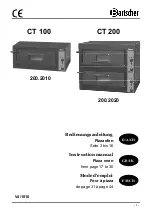
If you are part of the food processing or food service industry, there
is a good chance that you already know the advantages of vacuum
packaging. It has been used with success for many years as a safe and
cost effective method for extending shelf life and maintaining the quality
of food products. If vacuum packaging is new to your home or business,
you will soon wonder how you lived without it!
Whether you are a beginner or expert, there are certain basic guidelines
that should always be followed in order to package foods safe to eat.
Neglecting these basic guidelines can result in food spoilage, and in some
cases, illness or death.
Once you familiarize yourself with the VP545 and the procedures, you will
feel at ease using the VacMaster
®
Chamber Machine and enjoy a higher
quality of stored foods.
▪ Package only fresh foods. Do not package old or rancid foods. An
already bad product does not improve with vacuum packaging.
▪ Fresh foods (Meats, vegetables, cheeses, etc.) should be refrigerated
at 34˚F or below or frozen after vacuum packaging.
▪ Vacuum packaging removes a high percentage of air (which is 21%
oxygen). This slows the growth of most living microorganisms, which
degrade food, such as aerobic bacteria and molds. However, some
forms of bacteria such as clostridium botulinum (responsible for
botulism) are anaerobic and grow in the absence of oxygen.
▪ The foods susceptible to botulinum should be refrigerated for a short
term and frozen for long-term storage. Consume immediately after
heating.
▪ Vegetables such as cauliflower, broccoli and cabbage will emit gasses
when vacuum sealed. To prepare these foods for vacuum packaging,
you must blanch them first.
▪ All perishable foods must be refrigerated or frozen to prevent
spoilage.
▪ Vacuum packaging is not a substitute for heat canning.
Getting Started with Vacuum Packaging


































